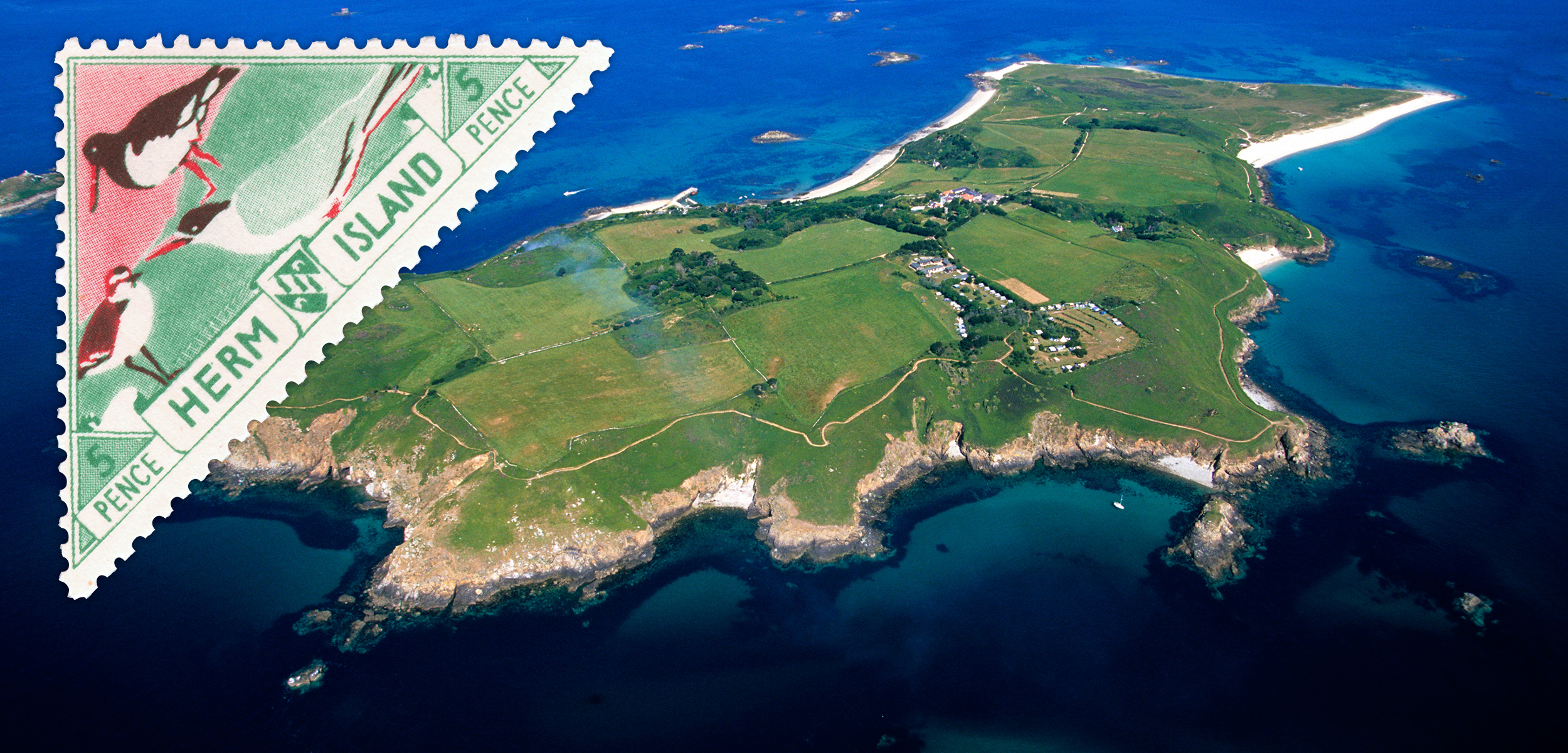The Little Post Office That Could
When Britain dubbed Herm Island too tiny to merit a post office, the islanders found a way to get that problem licked.
Article body copy
Postage stamps are lessons in history, politics, science, or geography packed onto a small piece of gummed paper. They’re also beautiful works of art. In Stamped we’re going coastal, with postal.
You know an island is small when it bans bicycles, its only hotel shuns clocks, and it created its own postage stamps after Britain’s General Post Office found that servicing the island wasn’t economical.
Herm Island, in the Bailiwick of Guernsey, one of the Channel Islands off the coast of Normandy, is two and a half kilometers long and just under a kilometer wide. Still, a steady stream of inhabitants has called it home, from sixth-century monks to today’s 60-odd residents. Grassy and idyllic with white sand beaches, reaching Herm takes a combination of planes, ferries, and taxis.
Herm’s isolation is perfect for those seeking solitude, but, in the past, this made communication with the rest of the world challenging. Britain opened a sub-post office on Herm in 1925 and while the cost of running the post office was relatively low—after all, it was only open for half an hour a day—its British government overseers deemed it unproductive and closed the office in 1938.
Herm was soon facing bigger threats than a lack of post: during the Second World War, German forces occupied the island. After liberation in 1945, Guernsey leased Herm to a tenant, A. G. Jefferies, a de facto caretaker who looked after the island for its residents (and any Guernsey weekenders who might want to enjoy it). In 1948, Jefferies, eager to boost post-war tourism, asked the British government to reinstate the postal office. They refused, so he started his own.
The first Herm Island stamps, issued in May 1949, covered the cost of shipping letters by boat across the five-kilometer channel from Herm to Saint Peter Port, Guernsey. Once there, they entered the British postal service.
Stamp designs varied over the years. There was a series of funky triangular stamps celebrating Herm’s flora and fauna, stamps celebrating Queen Elizabeth’s 1953 coronation, and stamps lauding Princess Margaret’s 1959 visit to Guernsey. But perhaps the most distinctive was the 1949 “pigeon post” stamp. When a letter was particularly urgent, the quickest way to deliver it to Guernsey was, yes, by bird. Luckily, Herm got a telephone link to the larger island later that year, taking the pressure for emergency response off the avian population.
Guernsey eventually gained control of its own post, re-establishing a sub-post office on Herm and making the made-on-Herm stamps useless as of October 1, 1969. Popular in collectors’ circles, some stamps are still available in the island’s gift shops.

